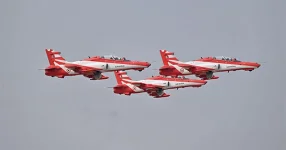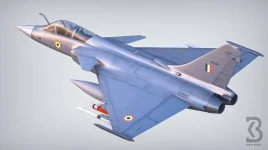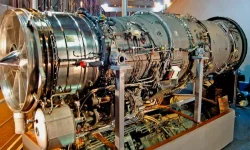- Views: 451
- Replies: 9
In a significant advancement for India's indigenous aerospace capabilities, BrahMos Aerospace has been assigned the task of developing a new afterburner component for the Kaveri Derivative Engine (KDE).
This effort is a key part of the long-standing Kaveri engine program, overseen by the Gas Turbine Research Establishment (GTRE), which operates under the Defence Research and Development Organisation (DRDO). The primary objective is to substantially increase the engine's thrust.
The current KDE is a non-afterburning variant that reliably produces 49 kilonewtons (kN) of 'dry' thrust. While suitable for applications like the planned DRDO Ghatak unmanned combat aerial vehicle (UCAV), this thrust level is insufficient for crewed fighter jets, which need the additional power surge an afterburner provides for combat scenarios and supersonic flight.
The new afterburner being designed by BrahMos aims to contribute an extra 29.4kN, targeting a total 'wet' thrust (with the afterburner engaged) of 78.4kN.
A notable feature of the Kaveri engine design is its consistent performance, or 'flat-rating', which allows it to maintain thrust output effectively even in India's typically hot and humid weather. This is considered an advantage over some other engines, such as the GE F-404 currently used in the Tejas Mk1A.
The F-404, rated at 84kN, is understood to experience a thrust reduction of nearly 8% in Indian conditions, effectively operating closer to 77.3kN. Therefore, if the upgraded Kaveri engine reliably demonstrates 78.4kN thrust in trials, it could match or potentially exceed the F-404's performance within India's specific operational climate.
Achieving this 78.4kN thrust benchmark would mark a major success for the indigenous Kaveri program. It could position the engine as a viable homegrown alternative to foreign powerplants used in India's fighter aircraft fleet, potentially paving the way for its integration into platforms like the Tejas Mk1A in the future. Such a development would significantly boost India's strategic autonomy and self-reliance in critical defence manufacturing sectors.
The targeted thrust of 78.4kN also signifies progress compared to earlier stages of the Kaveri program, where achieved thrust levels were reportedly in the 73-74kN range. Reaching this new figure would bring the engine performance considerably closer to the requirements for contemporary fighter aircraft.
However, reaching this goal involves overcoming several hurdles. The newly designed afterburner section must undergo thorough ground-based and airborne testing to validate its performance characteristics, reliability under stress, and long-term durability.
Furthermore, persistent challenges within the Kaveri program related to optimizing the engine's weight, ensuring stable combustion, and proving long-duration endurance must be successfully addressed for the upgraded engine to meet the demanding standards of the Indian Air Force.






